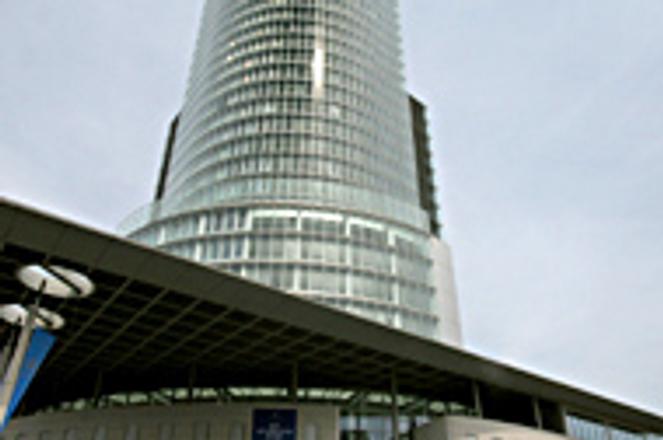The Slovak currency watcher.
photo: SITA
THE NATIONAL Bank of Slovakia (NBS) has been keeping an increasingly watchful eye over the Slovak currency these days, helping it not to lose the muscle it has worked so hard to gain. The formation of the new government, along with its inconsistent statements on issues vital to the markets and business circles, have taken a toll on the crown, which had been in fairly good shape recently.
On July 12, the crown weakened by almost 30 hellers, putting it at levels it hadn't seen since last November, which provoked a prompt intervention from the Slovak central bank.
The intervention aided the crown in climbing from its weakened stance of 38.720/38.740 SKK/EUR back up to 38.400/38.430 SKK/EUR.
This was the central bank's third intervention over the past couple of weeks, which have come at a cost of over €2 billion.
Market watchers say the crown is sensitive to political uncertainty and should expect further losses, which is keeping the NBS on alert.
New Finance Minister Ján Počiatek has remained increasingly cautious and refused to comment on the crown's dive.
Currencies of the neighbouring countries, however, did not share the crown's black day on July 12 and weakened only moderately.
Market watchers also say the central bank will continue to intervene as long as it has sufficient forex reserves to keep the crown within the plus/minus 15 percent band around the central parity set at 38.455 SKK/EUR in November 2005, when Slovakia entered the ERMII mechanism for euro adoption candidates.
They also cautioned that the effects of intervention only last for a limited time.
According to Slovenská sporiteľňa analyst Michal Musák, the interventions represent a partial outflow of speculative funds, since foreign investors are not as convinced of the crown's favourable midterm prospects as before.
He said the development of the crown's exchange rate will thus depend more on real flows of funds, such as the expected improvement of foreign trade.
"It's highly probable that the central bank will continue to intervene to meet the Maastricht criteria as long as the aim to adopt the euro in 2009 is still valid," Musák told the SITA news wire.
ING Bank chief economist Ján Tóth predicted in late June that the forex market would test the central bank's intervention levels.
"We believe the [NBS] will protect Slovak crown losses this side of 39 [SKK to EUR] since it formally lacks an argument for leaving the 2009 euro framework in place. We are changing our end-of-year forecast to 39 from 37, as in 2006 and 2007 the country's strong fundamentals will still provide some protection for the currency," Tóth told the Spectator in early July.
The coalition of the socialist-populist Smer, the far-right Slovak National Party (SNS) and the Movement for a Democratic Slovakia (HZDS), which led the country to the verge of international isolation between 1994 and 1998, had been seen by the markets as the worst-case scenario for Slovakia's next government.



